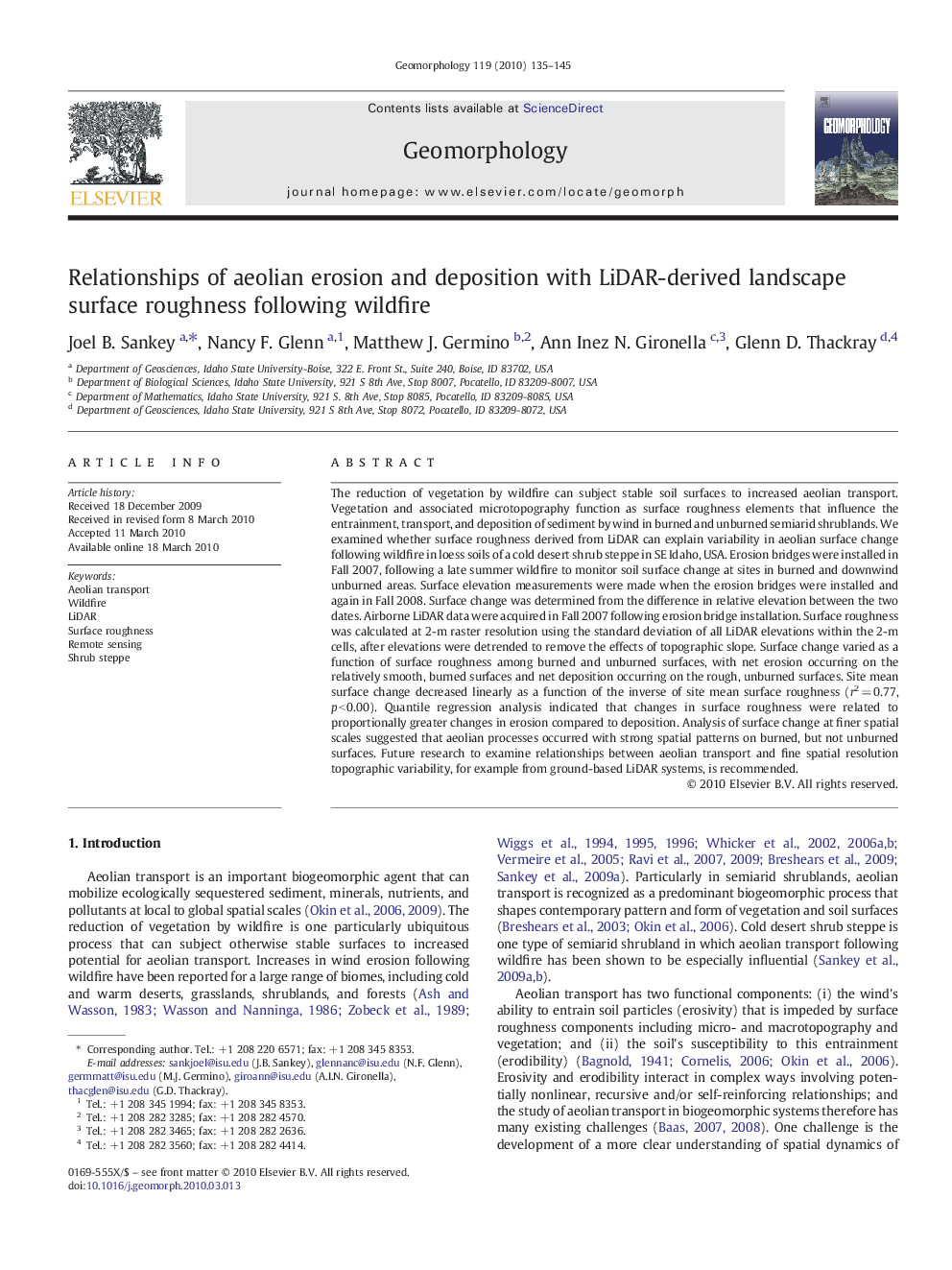| کد مقاله | کد نشریه | سال انتشار | مقاله انگلیسی | نسخه تمام متن |
|---|---|---|---|---|
| 4685930 | 1635521 | 2010 | 11 صفحه PDF | دانلود رایگان |

The reduction of vegetation by wildfire can subject stable soil surfaces to increased aeolian transport. Vegetation and associated microtopography function as surface roughness elements that influence the entrainment, transport, and deposition of sediment by wind in burned and unburned semiarid shrublands. We examined whether surface roughness derived from LiDAR can explain variability in aeolian surface change following wildfire in loess soils of a cold desert shrub steppe in SE Idaho, USA. Erosion bridges were installed in Fall 2007, following a late summer wildfire to monitor soil surface change at sites in burned and downwind unburned areas. Surface elevation measurements were made when the erosion bridges were installed and again in Fall 2008. Surface change was determined from the difference in relative elevation between the two dates. Airborne LiDAR data were acquired in Fall 2007 following erosion bridge installation. Surface roughness was calculated at 2-m raster resolution using the standard deviation of all LiDAR elevations within the 2-m cells, after elevations were detrended to remove the effects of topographic slope. Surface change varied as a function of surface roughness among burned and unburned surfaces, with net erosion occurring on the relatively smooth, burned surfaces and net deposition occurring on the rough, unburned surfaces. Site mean surface change decreased linearly as a function of the inverse of site mean surface roughness (r2 = 0.77, p < 0.00). Quantile regression analysis indicated that changes in surface roughness were related to proportionally greater changes in erosion compared to deposition. Analysis of surface change at finer spatial scales suggested that aeolian processes occurred with strong spatial patterns on burned, but not unburned surfaces. Future research to examine relationships between aeolian transport and fine spatial resolution topographic variability, for example from ground-based LiDAR systems, is recommended.
Journal: Geomorphology - Volume 119, Issues 1–2, 15 June 2010, Pages 135–145